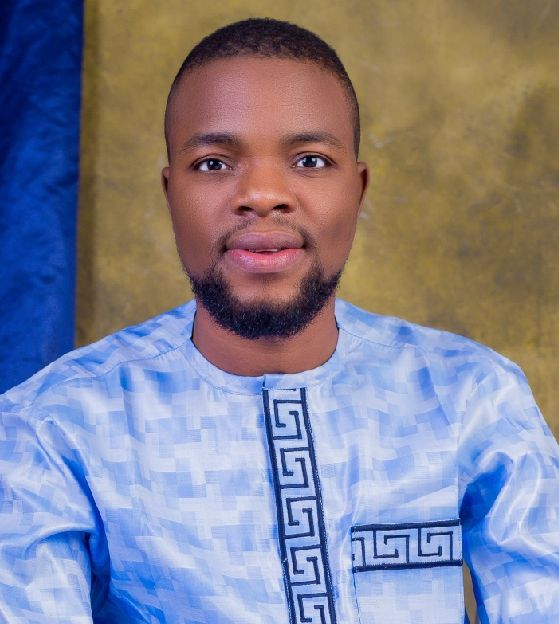Nanshin Emmanuel Nansak
Current PhD Student
Cellular Automata modelling of bioresorbable polymer/magnesium tissue scaffolds.
3D printing is revolutionizing the production of orthopaedic implants. 3D printing enables the customization of an implant specific to the patient and can facilitate rapid fabrication onsite where and when it is needed. Bioresorbable implants provide temporary mechanical support in areas of damaged tissue but are gradually resorbed by the human body as the body’s own tissue heals and they are no longer needed. Biocompatible composites made of bioresorbable polymers filled with Magnesium (Mg) particles are promising candidates for orthopaedic applications due to the ease of low-temperature 3D printing (i.e. Fused Deposition Modelling) and higher mechanical properties, enhanced osseointegration and reduced inflammatory response compared to polymer only implants. However, most common Mg-alloys in bulk form have too rapid biodegradation rates while on the other hand, bioresorbable polymers such as PLA degrade too slow. The degradation rates and rate of loss of mechanical properties from polymer/magnesium composite structures are not well studied and involve complex interactions which are influenced by porosity and geometry as well as material processing. The influence of the shape, composition and dispersion of Mg-based particles on the polymer degradation, biosorption, and transport processes and resulting mechanical properties and implant degradation profile is not well understood. In this project, mathematical relationships for in vivo degradation processes in magnesium-filled biopolymer composites will be developed, cellular automata/compartmental model for 3D representation of degradation and transport processes in a model implant design and the degradation of the material to mechanical properties of the structure will be linked via a 3D CA model. Also, the model will be validated against experimental data from simulated degradation tests for 3D printed magnesium-filled polymer scaffolds and a 3D voxel model will be developed using cellular automata to explore the effect of different filler loadings and attributes on the degradation and rate of loss of mechanical properties of biopolymer/magnesium composite tissue scaffolds. All the models will be validated against experimental data on 3D-printed tissue scaffolds.
Bio:
Nanshin Nansak was born and brought up in North-central Nigeria. He is of Tarok origin in Plateau State of Nigeria.
Nanshin graduated as the overall best student in his secondary school in a class of 215 students in Ndem Langtang North. He got admitted into the prestigious Abubakar Tafawa Balewa University Bauchi in 2011 where he studied Mathematics and graduated as the overall best student in Mathematics (2015/2016) and the winner of the Dr Yau Gital’s Prize for Academic Excellence.
Nanshin enrolled for his master’s degree (M.Sc.) in Mathematics at the same University between 2017 and 2019 graduating as the best M.Sc. student in M.Sc. Mathematics as well. Nanshin has also contributed passionately to research activities in the National Space Research and Development Agency, particularly at his place of primary assignment at the Zonal Advanced Space Technology Applications Laboratory (ZASTAL) Gombe.
Nanshin also worked with the Bauchi State Research Committee, medical doctors, professors and the Staff of the Ministry of Health in Bauchi State to develop the mathematical model that was used as a control strategy for Covid-19 in Bauchi State in 2020.
Nanshin joined ATU Sligo in 2022 and he currently works on the mathematical and computational modelling of biodegradable magnesium-filled composite for orthopaedic and tissue applications in the department of Mechatronic engineering under the supervision of Dr Marion McAfee, Dr Leo Creedon and Dr Denis Mahoney.
Papers
Wuyep.L.C., Kadiri.U.A., Monday.I.S., Nansak, E.N., Zakka.L., Thomas.H.Y.,&Ogugua, E.P.(2021). ‘Geo-Chemical Techniques for Earthquake Forecasting in Nigeria’ Asian Journal of Geographical Research 4(3): 29-45, 2021; Article no.AJGR.72897 ISSN: 2582-2985
Abdu M.Y., Nansak,E.N., Maigoro, A., Malami, S., Mogere,D., Mbaruk, S., Mohammed,R., Lawal,S., &Usman. U.U. (2020). ‘Mathematical modelling of COVID-19 transmission and control strategies in the population of Bauchi State, Nigeria’. Annals Of African Medical Research Vol 3(120).
Hyelpamduwa. Y., Nansak, E.N.,& Itse. A. (2020). ” On the Crop Identification of Maize using Remote Sensing and GIS in the Jos South L.G.A., of Plateau State.” Frontiers of Knowledge Journal Series | International Journal of Agriculture and Food Sciences ISSN: 2645-2431 | Vol. 2(3).
Mshelia I. B.& Nansak E. N. (2016) “On the Solution of Fractional Differential Equations Using Mittag-Leffler functions. Duncan journals. International Journal of Science and Engineering ISSN: 1245-3312 Vol. 3(53)
Collaborations
Geodatabase Creation and Mapping of Health Facilities in North-Eastern Nigeria. (A Case study of Gombe State. 2021) Sponsored by National Space Research and Development Agency, NASRDA
Mapping And Characterization of Mineral Resources in North East Nigeria. 2020 Sponsored by North East Advanced Space Technology Applications Laboratory Gombe
Geospatial Expansion of Gombe Metropolis Before and After State Creation 2019. Sponsored by North East Advanced Space Technology Applications Laboratory Gombe
Geospatial Analysis of Deforestation and Land Use Dynamics in Northeast Nigeria 2021. Sponsored by National Centre for Remote Sensing, Jos
